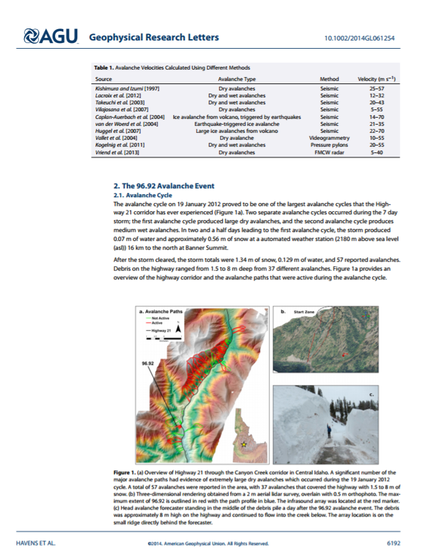
On 19 January 2012, a large D3 avalanche (approximately 103 t) was recorded with an infrasound array ideally situated for observing the avalanche velocity. The avalanche crossed Highway 21 in Central Idaho during the largest avalanche cycle in the 15 years of recorded history and deposited approximately 8 m of snow on the roadway. Possible source locations along the avalanche path were estimated at 0.5 s intervals and were used to calculate the avalanche velocity during the 64 s event. Approximately 10 s prior to the main avalanche signal, a small infrasound signal originated from the direction of the start zone. We infer this to be the initial snow pack failure, a precursory signal to the impending avalanche. The avalanche accelerated to a maximum velocity of 35.9 ± 7.6 m s−1 within 30 s before impacting the highway. We present a new technique to obtain high spatial and temporal resolution velocity estimates not previously demonstrated with infrasound for avalanches and other mass wasting events.
This document was originally published by American Geophysical Union in Geophysical Research Letters. Copyright restrictions may apply. doi: 10.1002/2014GL061254
Available at: http://works.bepress.com/hanspeter_marshall/23/
